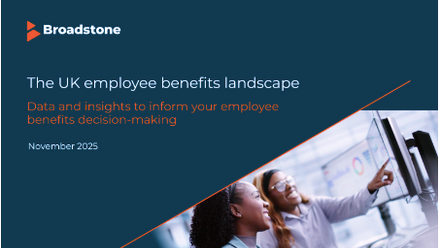Impact of extended working lives on employer group risk and insurance benefits
The term 'ageing workforce' is increasingly being used today, and this is likely to continue as people’s thoughts and expectations around retirement change.
One of the common barriers of providing benefits to an older workforce is cost. It appears counterintuitive given the focus on preventing age discrimination.
Using private medical insurance (PMI) as an example, it's an unavoidable reality that the older you get, the higher the likelihood of requiring medical care.
More complex conditions come with higher treatment costs, which in turn influence future premiums.
An increasing trend of longer working lives does present both opportunities and challenges for employers, particularly when it comes to group risk and healthcare-related insurance benefits.
Implications for employers on group risk and healthcare benefits
Health and wellbeing: As mentioned, as employees age, health-related issues will undoubtably increase, which can influence the cost and structure of benefits and policies. This increases the likelihood of claims being made and results in higher future premiums for employers.
Product design and availability: As the length of working life continues to extend, insurers may need to adapt their product designs to cater to an older workforce, potentially removing or easing age-related limits or exclusions.
The downside is that employers may find it more difficult or too expensive to secure comprehensive cover for older employees.
Currently, while PMI cover typically does not have a mandatory cease age, other group risk benefits in the traditional UK market do not allow cover after age 75 for group life assurance and age 70 for group income protection.
Any extension of cease age will undoubtably increase risk to the insurer and impact premiums.
Potential uninsured liabilities: Given that insured benefits are typically used to reinsure a contractual benefit promise, it’s vital that employers check to ensure contracts of employment only guarantee a benefit if it’s insurable and available at an affordable cost. If not, they may be left with an uninsured liability.
Strategy and policy considerations
Review benefits on a regular basis: This may seem an obvious thing to suggest, but a regular review and appraisal of insured benefits, or even new alternative benefits, will ensure they remain fit for purpose and affordable.
The review process should include:
- An analysis of claims data, particularly around health-related benefits, as this will highlight what risk and associated increased costs can be attributed to older workers.
- Looking at offering flexible or tiered benefits, meaning that employees can select benefits which are suited to their age and health needs.
- Reviewing different benefit options and alternative providers in the market to ensure best return on investment is obtained.
- Depending on the size of the workforce and scale of benefits being provided, perhaps consider different ways of funding cover such as self-insurance or for PMI, risk-sharing or medical trust arrangements.
Open, transparent communication
It is vital that there is open dialogue with employees around how longer working lives will invariably impact on the provision of benefits.
Area’s worth considering are:
- Ensuring any changes to benefit plans or eligibility criteria are clearly explained.
- Offering access to resources or information on keeping healthy and staying productive for longer. This could be via the value-added benefits increasingly being offered by group risk insurers.
Seeking expert advice
Employers should seek advice from insurance intermediaries and legal professionals. They are well placed to ensure employers are kept fully up to speed with age-legislation issues and changing benefits for an ageing workforce.
Broader considerations
Age discrimination
It is vital that employers understand age discrimination legislation when considering any changes to employee benefits.
This is to ensure that age is not the driving factor in making decisions, rather more objective factors such as risk and premium cost.
Health and wellbeing
Proactively promoting employee health and wellbeing, along with preventative pathways can help to reduce risks linked to an older workforce.
Adaptations in the workplace
Although not an insured benefit, reasonable adaptions to the workplace adaptations may help older workers remain in work for longer.
By actively addressing how longer working lives impact on health and group risk benefits, employers can both ensure employees are provided with meaningful benefits and support in a cost-effective manner.
Supplied by REBA Associate Member, Barnett Waddingham
Barnett Waddingham is proud to be a leading independent UK professional services consultancy at the forefront of risk, pensions, investment, and insurance. We work to deliver on our promise to ensure the highest levels of trust, integrity and quality through our purpose and behaviours.








